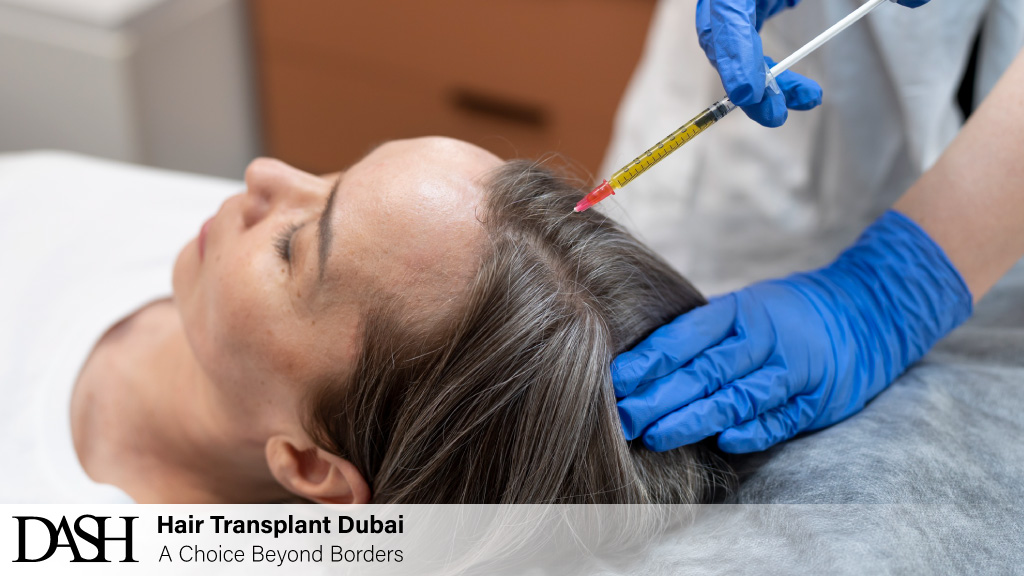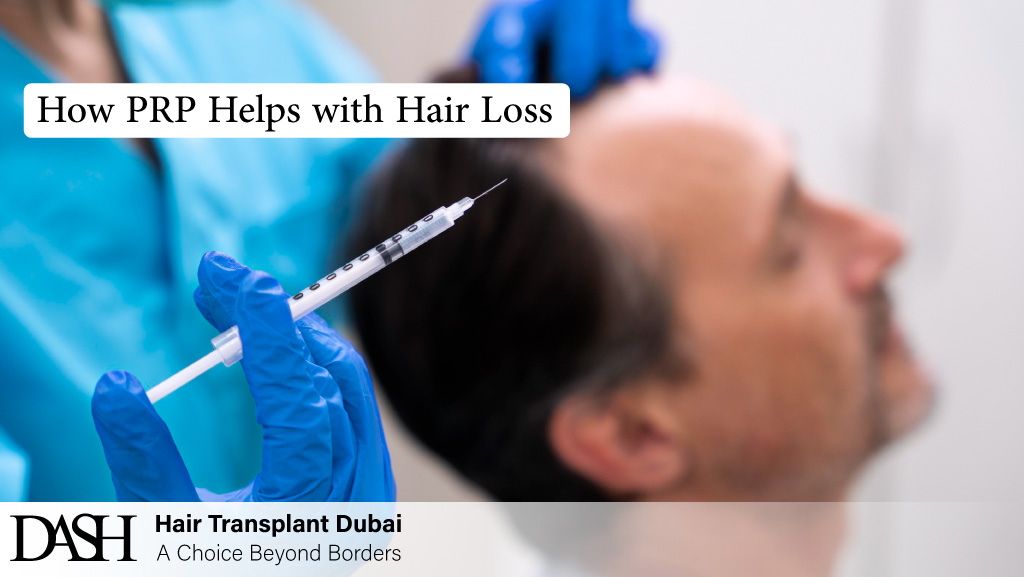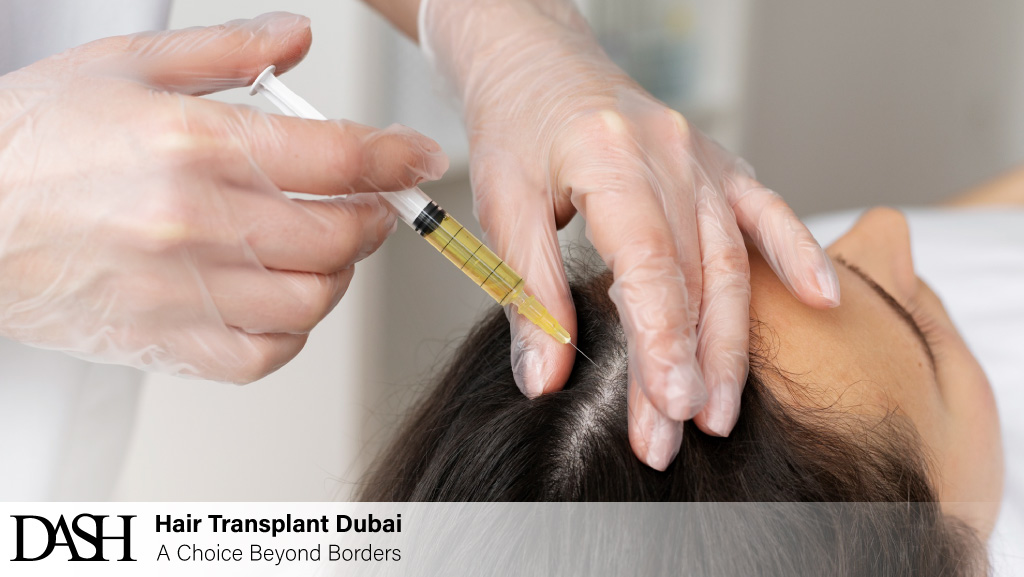PRP Therapy for Hair Loss | Benefits, Procedure & Timeline

Hair loss is a frustrating and often emotional experience for both men and women. While there are many treatments available, PRP therapy for hair loss has gained popularity as a natural, non-surgical solution with impressive results. In this comprehensive guide, we’ll explore what PRP is, how it works, its benefits, the treatment process, and the expected timeline for visible results.
What Is PRP Therapy?
PRP stands for Platelet-Rich Plasma—a concentration of platelets derived from your own blood. Platelets are rich in growth factors, which help stimulate healing and cell regeneration. When injected into the scalp, PRP activates dormant hair follicles and supports healthier, stronger hair growth.
How PRP Helps with Hair Loss
Once injected into the scalp, PRP works to:
- Improve blood circulation around the hair follicles
- Strengthen thinning or weakened hairs
- Revive inactive or “sleeping” follicles
- Reduce the rate of hair shedding
This makes it especially effective for those experiencing androgenetic alopecia (genetic hair loss).

Key Benefits of PRP for Hair Loss
- ✅ 100% Natural Treatment: Since it uses your own blood, there’s no risk of allergic reaction.
- ✅ Non-Surgical & Minimally Invasive: No scalpels, no stitches, no downtime.
- ✅ Stimulates Natural Hair Growth: Encourages your hair to grow on its own—no implants required.
- ✅ Safe & Low Risk: Especially when performed by a skilled medical professional.
- ✅ Works Well with Other Treatments: Can be combined with medications or topical therapies for better results.
Step-by-Step PRP Procedure
1. Initial Consultation
The process begins with an evaluation by your specialist, including medical history, type of hair loss, and sometimes blood tests for vitamin deficiencies or hormonal imbalances.
2. Blood Collection
A small amount of your blood (usually 10–20 ml) is drawn—just like a regular blood test.
3. PRP Separation
Your blood is placed in a centrifuge machine, which spins it to isolate the platelet-rich plasma.
4. Scalp Preparation
The scalp is cleaned and numbed using a topical anesthetic to ensure comfort.
5. PRP Injection
Using a fine needle, the PRP is carefully injected into the areas of hair thinning or loss.
6. Aftercare Instructions
Patients are advised to avoid washing their hair or applying any products for 24 hours. Sun exposure and strenuous exercise should also be limited temporarily.
PRP Results Timeline: When Will You See a Difference?
⏱ Month 1: Little to no visible change yet—this is when the healing process begins.
⏱ Month 2–3: Noticeable reduction in hair shedding and a healthier scalp.
⏱ Month 4–6: New hair growth begins, and existing hair becomes thicker and fuller.
⏱ After 6 Months: More significant improvements in volume and coverage are visible.
Most patients require 3–4 sessions spaced 4–6 weeks apart, followed by maintenance sessions every 4–6 months to sustain the results.

Who Is a Good Candidate for PRP?
PRP works best for:
- Individuals with early-to-moderate hair loss
- People with active but weakened hair follicles
- Those with androgenetic alopecia (male/female pattern baldness)
It may not be effective for individuals with completely bald areas or scarring alopecia where follicles are permanently damaged.
Are There Any Side Effects?
Since PRP is autologous (from your own body), it’s generally very safe. Mild side effects include:
- Redness or tenderness at injection sites
- Mild swelling or itching
- Temporary bruising
These usually subside within 24–48 hours.
Female Hair Transplant in Dubai
Can PRP Be Combined with Other Treatments?
Absolutely. For enhanced results, PRP therapy is often paired with:
- Topical Minoxidil
- Oral Finasteride (for men)
- Low-Level Laser Therapy (LLLT)
- Microneedling
These combinations can maximize the growth potential of your hair follicles.
PRP vs Hair Transplant: Which Is Better?
If you’re in the early stages of hair loss, PRP can be a powerful tool to regrow your natural hair without surgery. For more advanced cases with severe thinning or bald patches, a hair transplant may be a better solution.
Interestingly, many patients use PRP post-transplant to improve healing and enhance the survival rate of grafted follicles.
Final Thoughts
PRP therapy for hair loss offers a promising, natural, and non-invasive path to stronger, fuller hair. It harnesses your body’s own regenerative capabilities to revive weak or inactive hair follicles. With consistent sessions and proper care, you can expect a noticeable improvement in hair density and scalp health.
Frequently Asked Questions (FAQ)
PRP therapy is highly effective for individuals with early to moderate hair thinning, especially those with androgenetic alopecia. While results vary by person, most patients experience reduced shedding and noticeable hair regrowth within 3 to 6 months.
Most people need 3 to 4 initial sessions spaced about 4–6 weeks apart. After that, maintenance treatments every 4–6 months help sustain the results over time.
The procedure involves minimal discomfort. A topical numbing cream is usually applied beforehand, and most patients describe the feeling as a slight pinch or pressure.
PRP stimulates natural hair growth, but it’s not a permanent cure for hair loss. Regular maintenance sessions are needed to preserve the results, especially if the underlying cause of hair loss (e.g., genetics) persists.
Yes. PRP can be combined with topical minoxidil, oral medications, microneedling, or laser therapy to enhance outcomes. This multi-approach strategy often delivers faster and more noticeable improvements.
PRP therapy requires little to no downtime. Most patients return to normal activities the same day, although it’s best to avoid washing your hair, sun exposure, or intense workouts for the first 24 hours.